When the Roman Emperor Constantine moved the capital of his fading empire to Byzantium, he declared it “Nova Roma” until renaming the city to “Constantinople” after himself. The city served as capital for the Roman, Byzantine, and Ottoman empires during their reigns until 1920, when the Republic of Turkey made official the moniker “Istanbul.” This city, once the capital of the world, has bridged European and Asian culture for millenia, and as I walked through its streets, I felt for the first time that I was in a completely foreign place.
Jenni and I had the pleasure of exploring the city with two wonderful friends of ours, Will and Heather. We kicked off our adventure with a self-guided tour of the most important sights—each of us preparing a bit of history to share. I kicked off the tour with a stop at the Hagia Sophia, a massive mosque that was built as a Christian church in 532 AD and converted to a mosque in 1453, when Mehmed II conquered Constantinople for the Ottoman Empire. Inside is opulent and cavernous, the carpeted floor reminding any non-Muslim that one’s time in a mosque is usually spent on the floor in prayer.
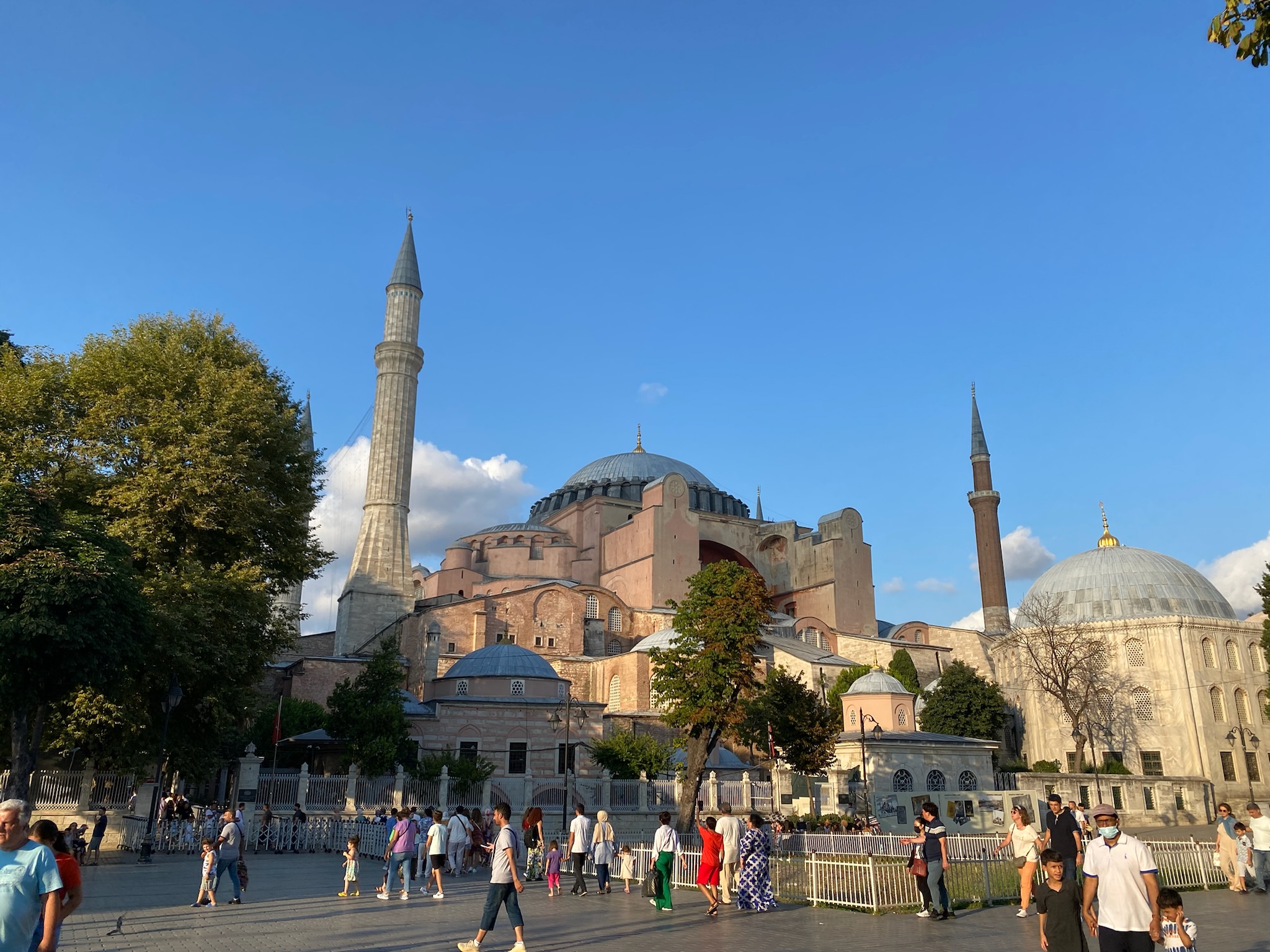
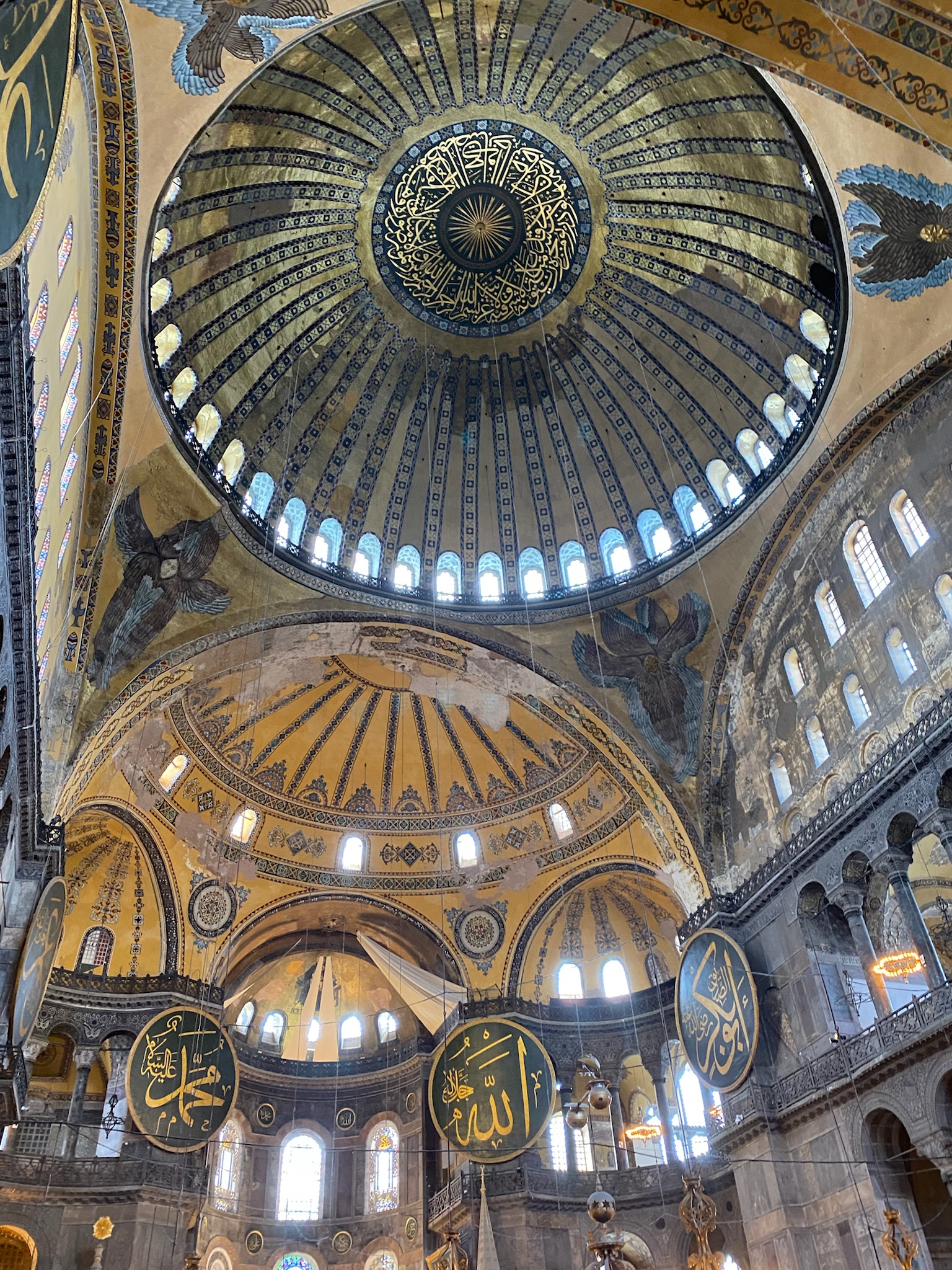
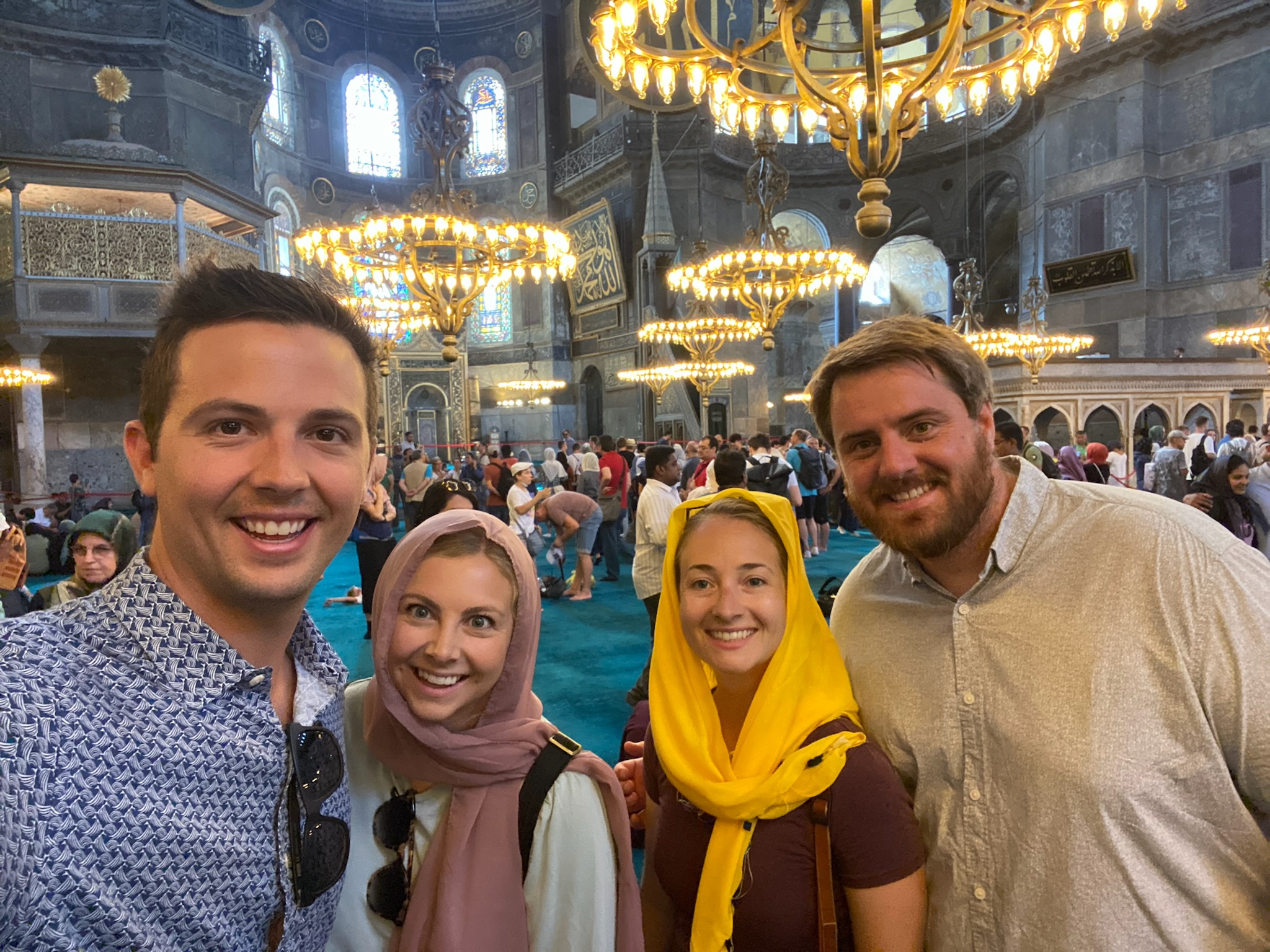

As we discussed the disparity between the men’s and women’s sections of the mosque and its implications, we headed towards the Basilica Cistern, a massive subterranean cavern constructed in 476 AD for public water access. We walked on pathways above the water amid ancient and modern relics, greeted with dim, eerie lights that eventually turned into a Medusa-themed light (or perhaps shadow) show. Jenni recounted the history as we snaked our way around the cool chamber.
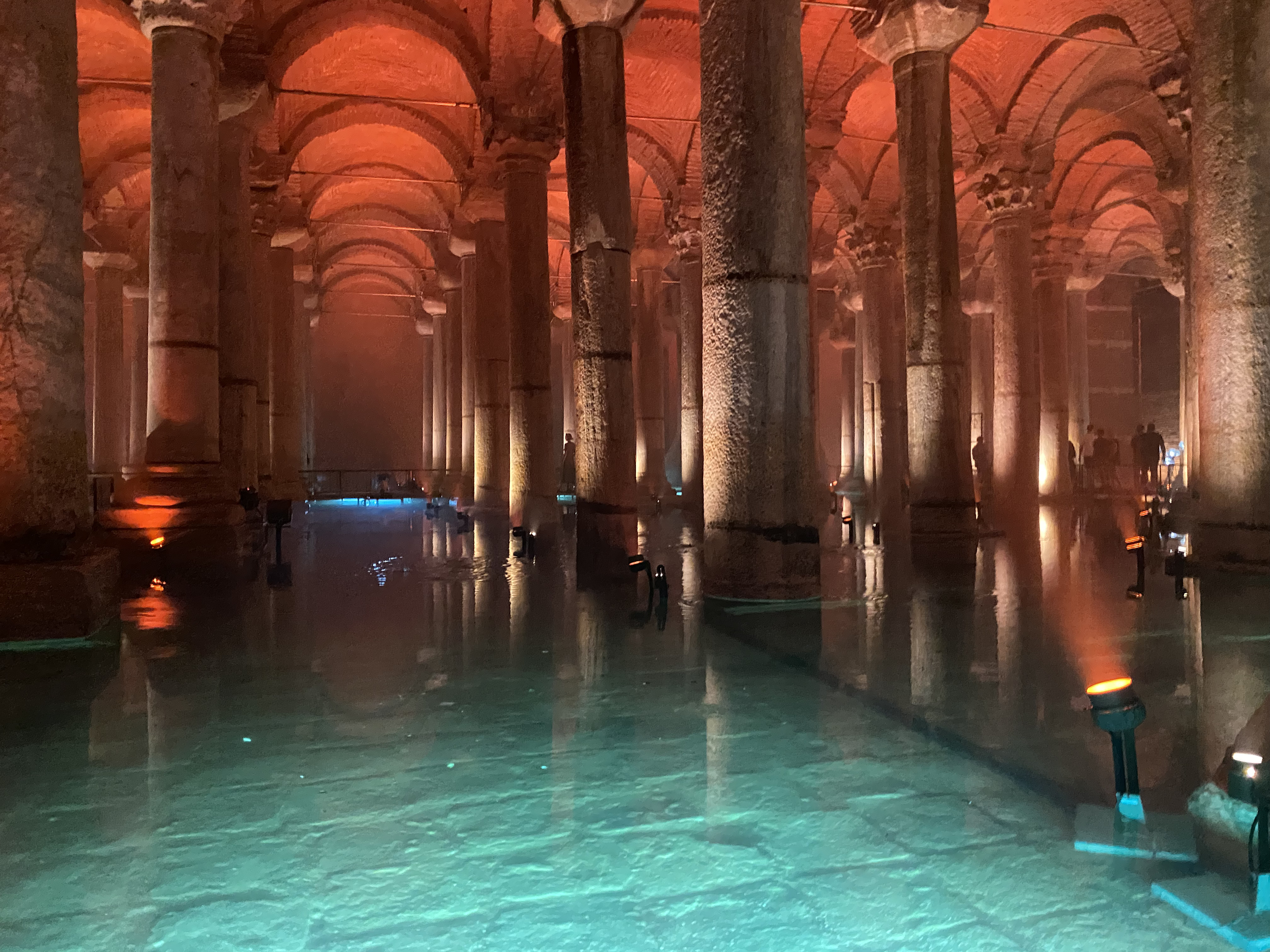
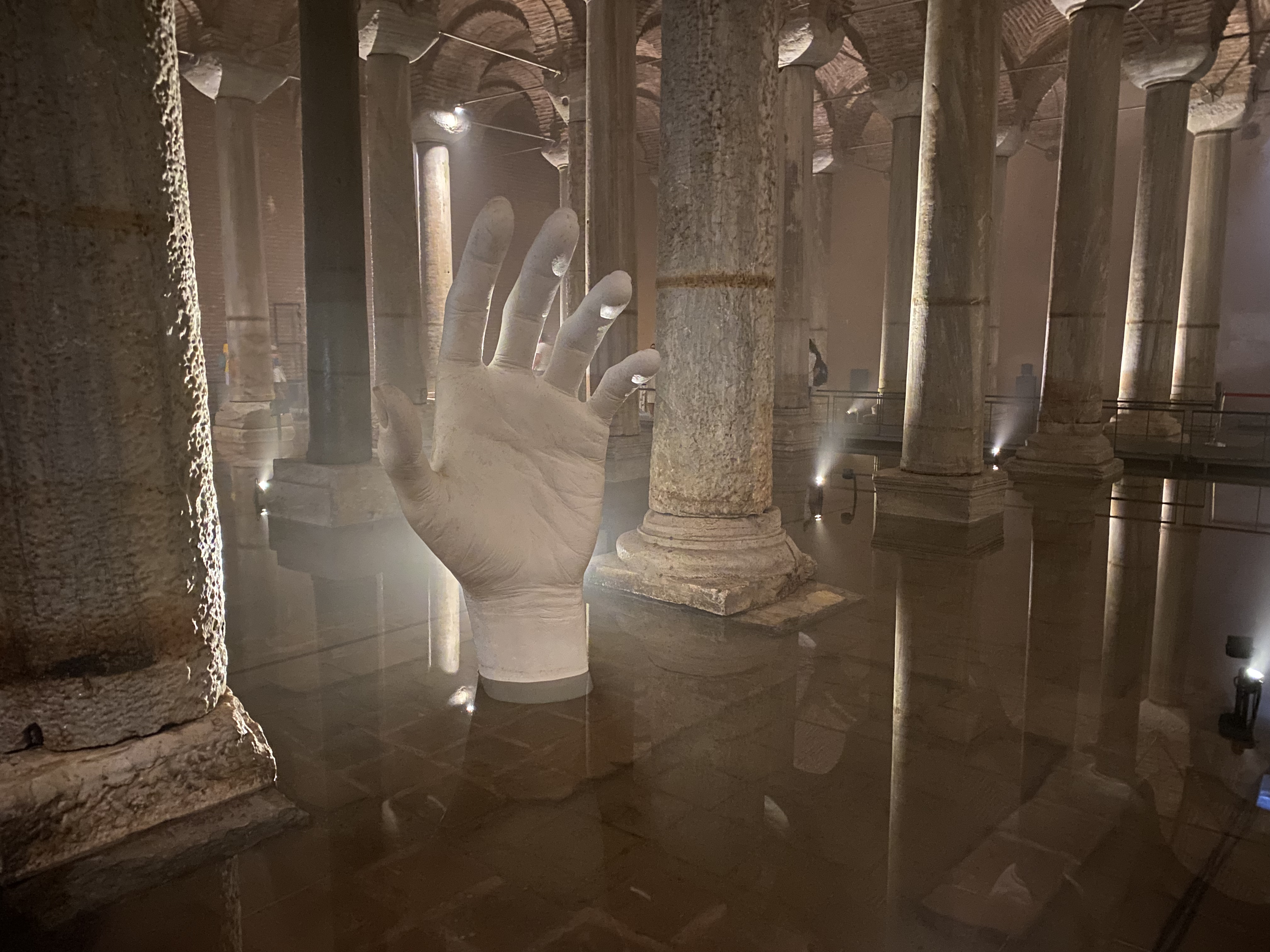


Putting off lunch, we headed towards the Hippodrome where Heather captivated us with its significance. Once a venue for politically-charged chariot racing in the Byzantine Empire, the square still holds important monuments from this time. The Obelisk of Theodosius, built in 1490 BC and transported to Constantinople in 390 AD, commands attention in the center of the square.
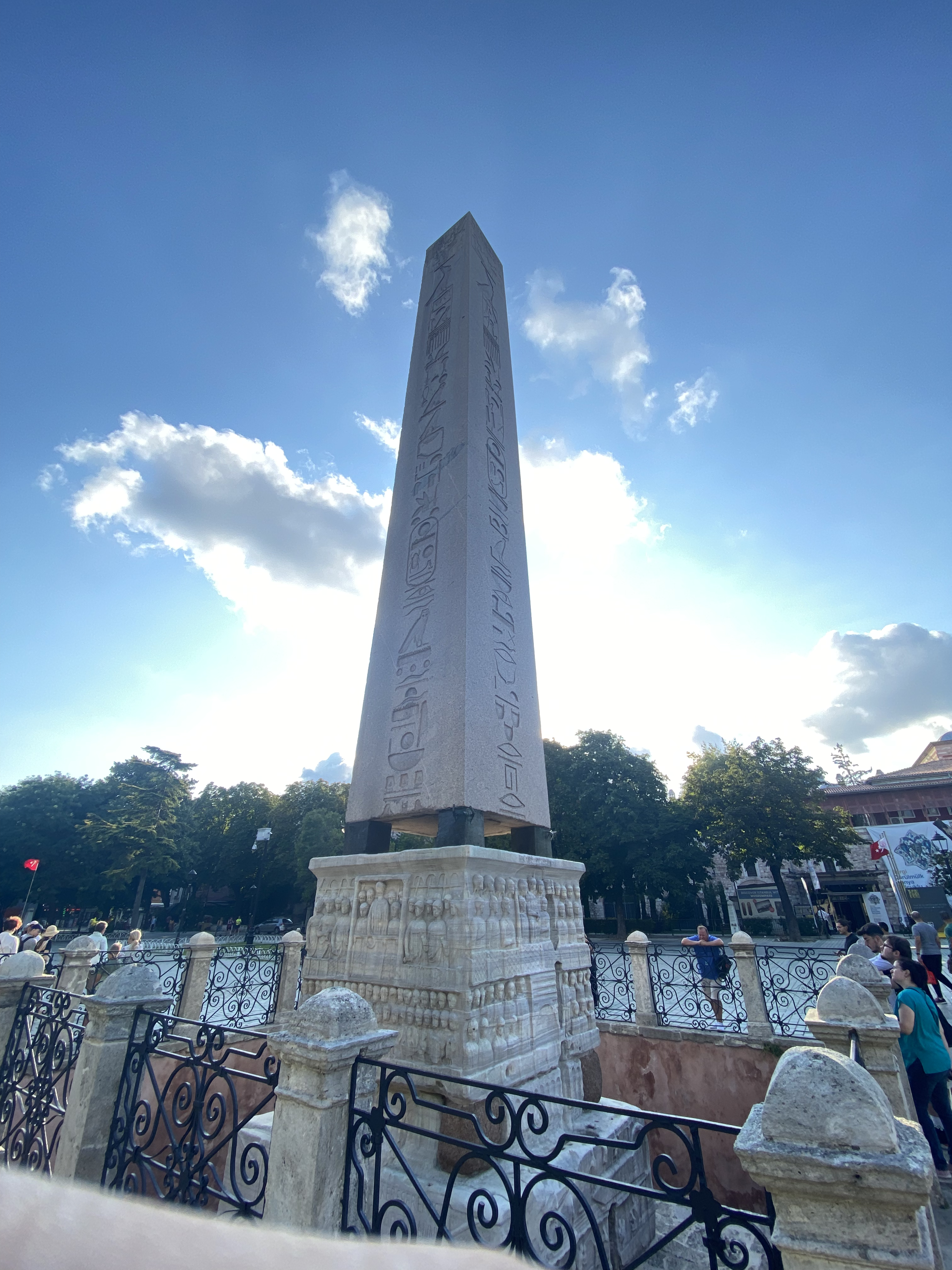
The Obelisk of Theodosius in the Hippodrome.
Our last tour stop was the Blue Mosque, a stunning building that sits surprisingly close to and opposite from the Hagia Sophia. As Will explained, when Sultan Ahmed I built the mosque in 1609 to reassert Ottoman power in the region, he came under fire from another mosque in Mecca; apparently, orders for “altın minareler” (gold minarets) were misunderstood as “altı minare” (six minarets), and this was a great insult to the mosque in Mecca that had six. Rather than take a minaret down, the Sultan gifted the mosque in Mecca seventh. Disappointingly, we couldn’t see much inside due to renovations.
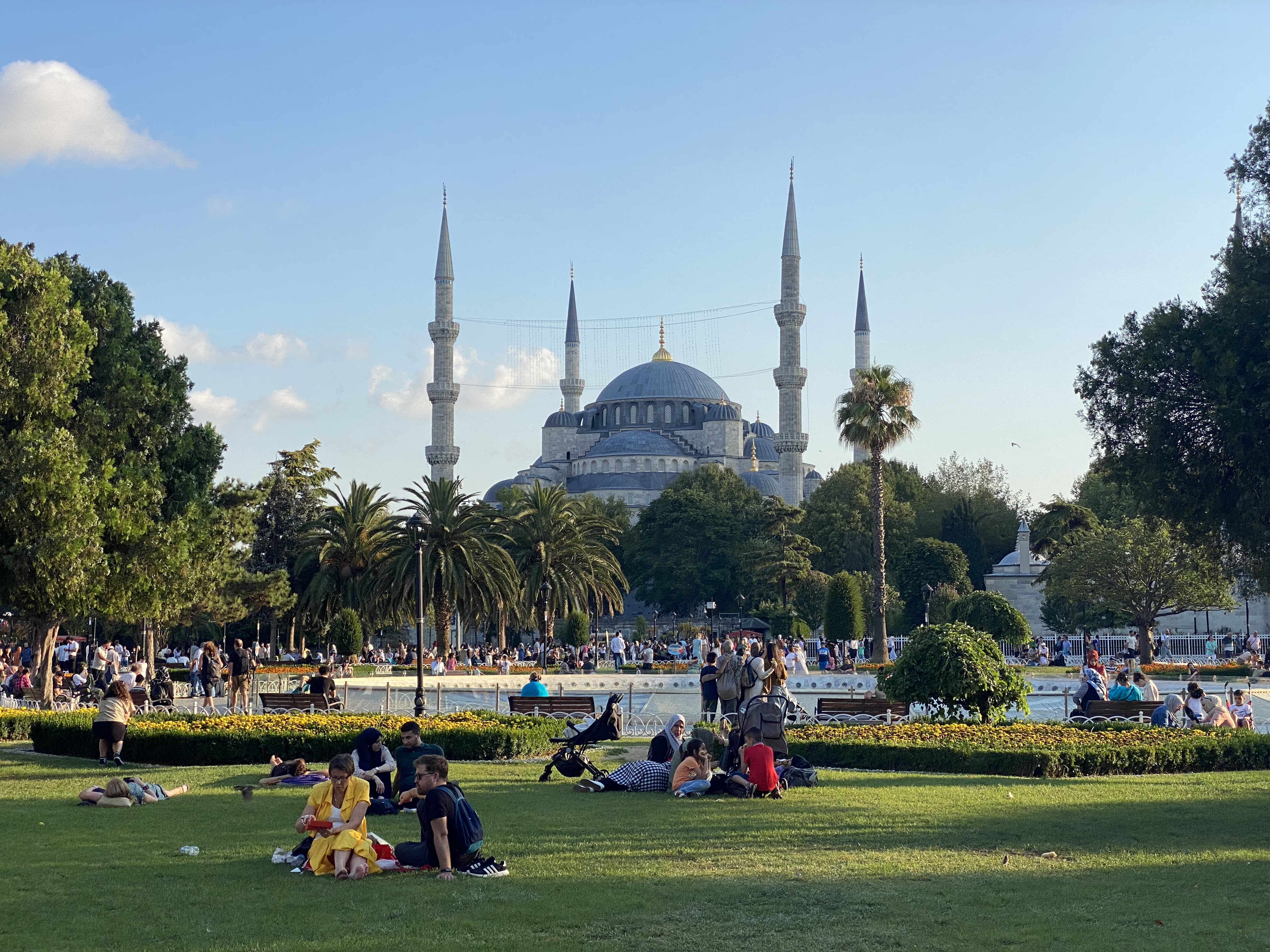
The Blue Mosque.
The old town of Istanbul is dotted with mosques, crowded with women in head coverings, and filled with the savory fumes of Turkish street food. Some tourists are hurrying to see the sights while others are finding a place to rest and revel in the history around them. This is the first Muslim country I’ve ever visited, and these surroundings, coupled with the bellowing call to prayer, were a constant reminder of unfamiliarity. While visiting the sights and entering the mosques brought the culture in close proximity, I still felt removed from the world around me.
The evening’s dinner and entertainment was a cooking class in a more modern part of Istanbul, reached via what must have been the most crowded tram in the history of public transportation. Our host, Kaan, and his crew of two welcomed the four of us and our soon-to-be new friend, Gabby, to his kitchen and laid out the agenda for the evening. We spent several hours preparing the dishes: kneading dough, cooking spiced ground beef, rolling grape leaves, and carefully packing cheese and dough for our dessert. The results were absolutely delicious.
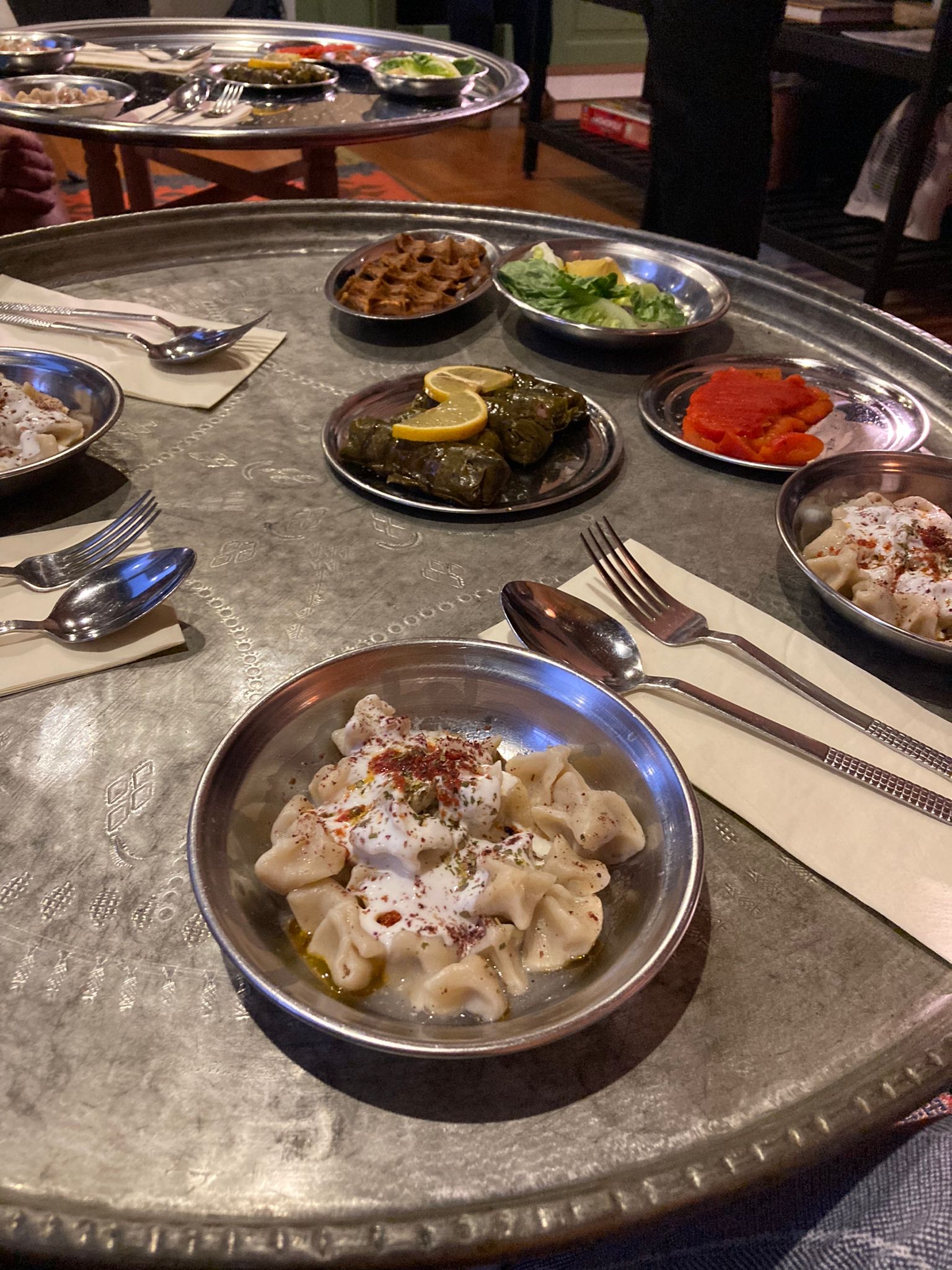
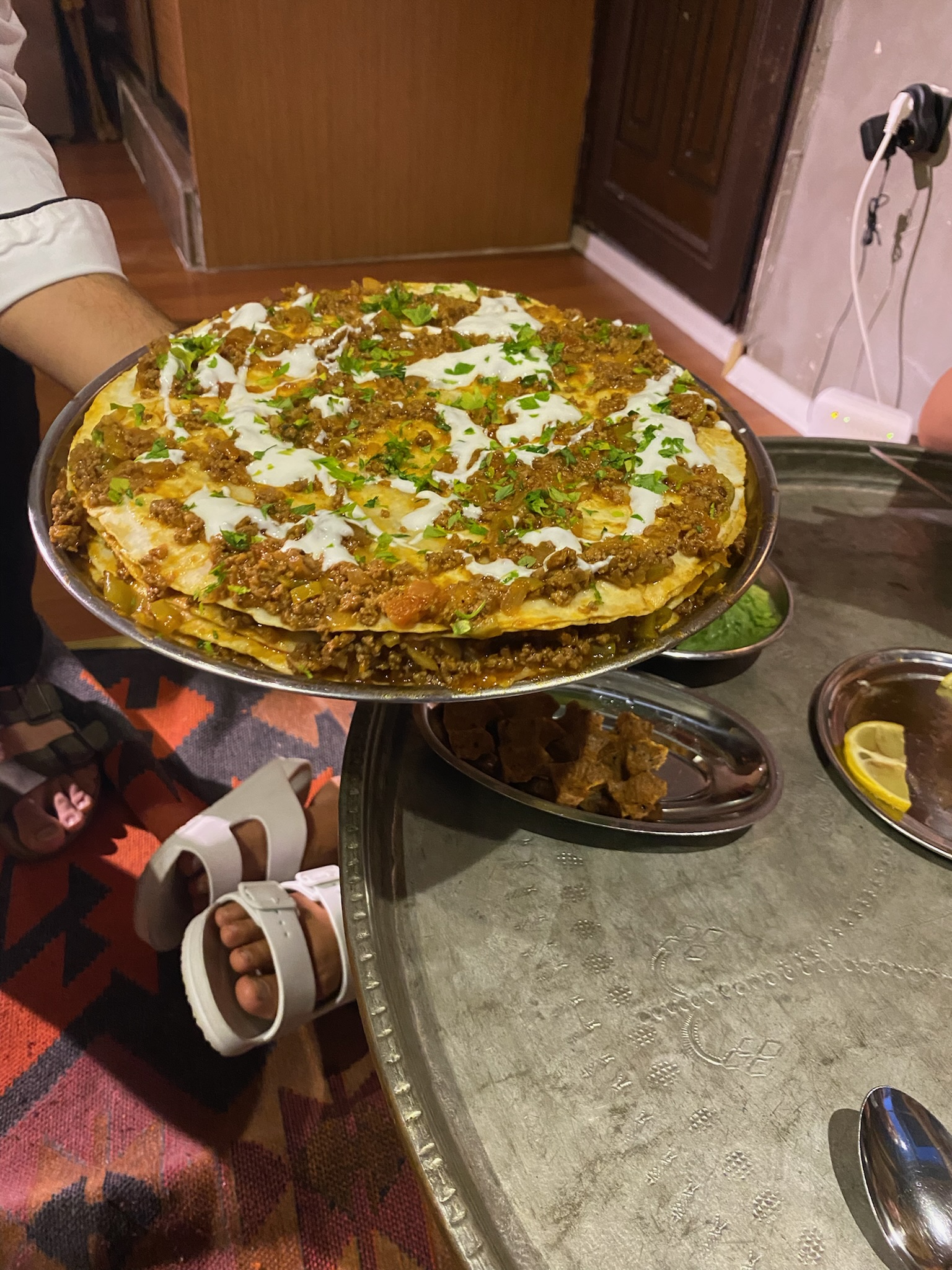
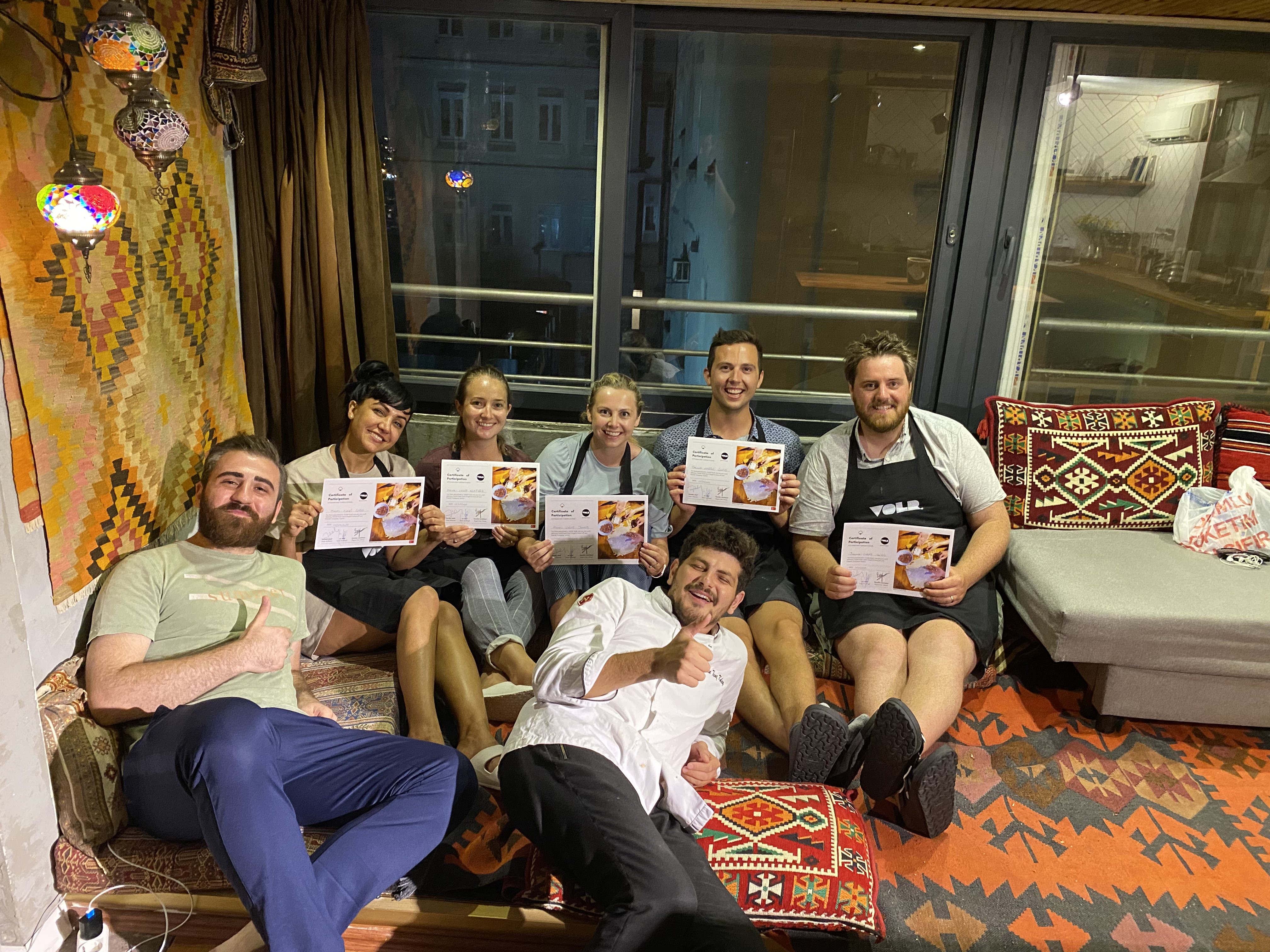
The best part of the evening, however, was not the food; rather, it was spending time with Kaan and listening to him talk about his food and culture. He sat on the floor with us and spoke of his country and dishes with pride. He and his crew taught us all how to dance the Turkish way, and Arda, his partner, taught Will and me the traditional dance for men at a Turkish wedding!

Learning a traditional Turkish dance.
As we bid our farewells and departed back to our hotel after a gluttonous evening, I left feeling a bit more connected with Istanbul and its culture. Cooking and eating a homemade Turkish meal was the perfect way to end our first day in the former capital of the world.
